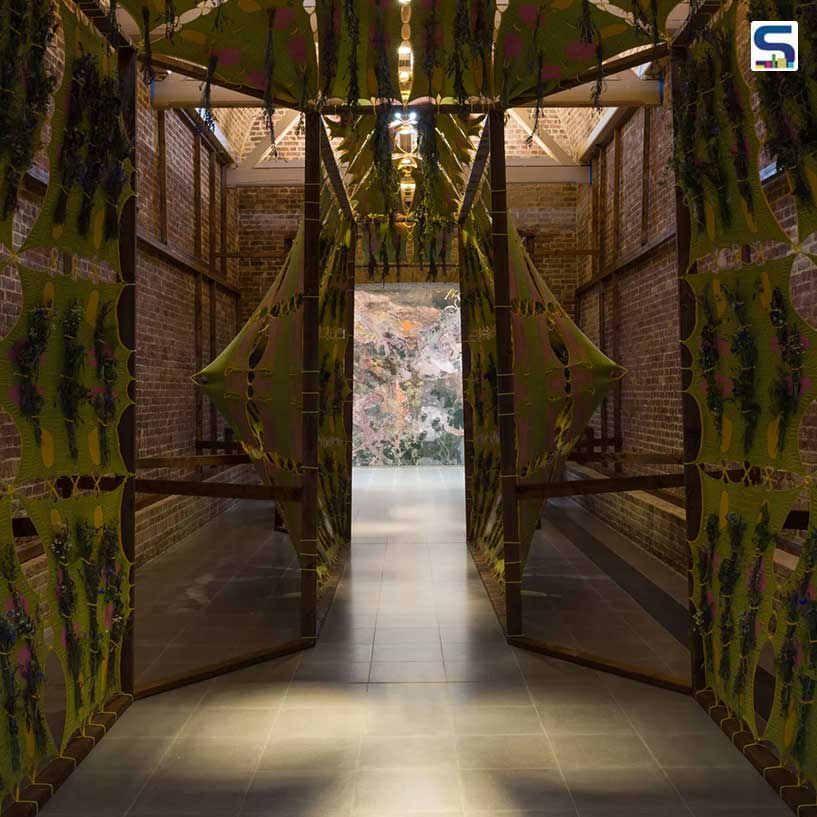
Known for its pioneering exhibitions with renowned artists in contemporary art, the Serpentine Gallery this year is focusing on the climate crisis through Back to Earth. Curated by Rebecca Lewin, the programme is a long-term interdisciplinary artistic approach that aims to remind us of the fragility of the planet that we depend on. Staged at Serpentine North till September 18, 2022, artist Tabita Rezaire of Amakaba and architect Yussef Agbo-Ola of Olaniyi Studio have set out the course to explore man’s relationship with medicinal plants through their spectacular installation. Here is a detailed report on the project by SURFACES REPORTER (SR).
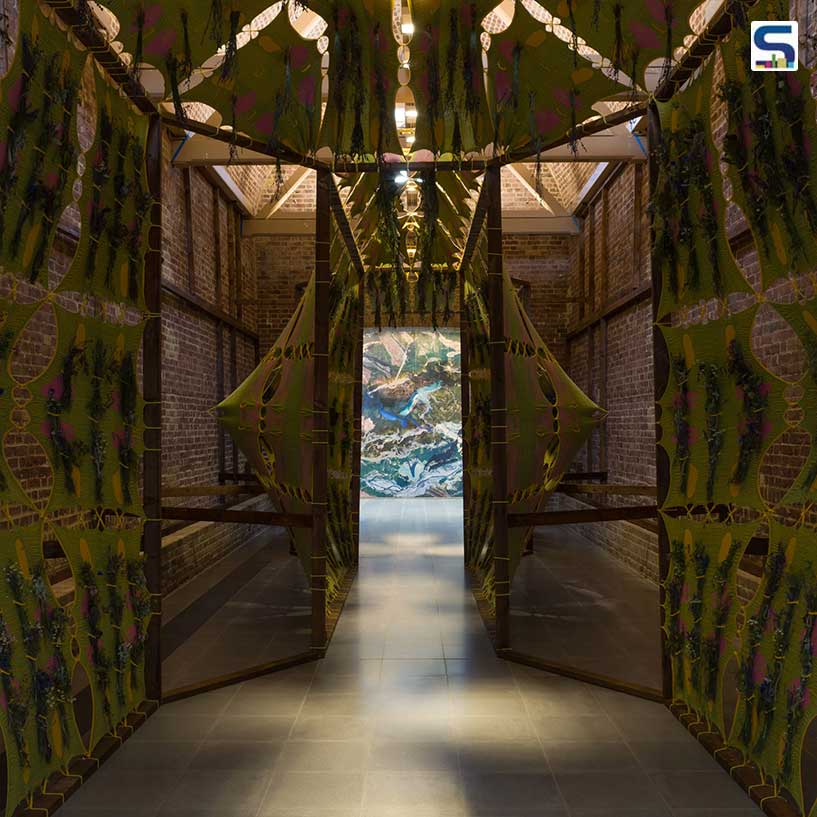 Artist Tabita Rezaire of Amakaba and architect Yussef Agbo-Ola of Olaniyi Studio have set out the course to explore man’s relationship with medicinal plants through their spectacular installation.
Artist Tabita Rezaire of Amakaba and architect Yussef Agbo-Ola of Olaniyi Studio have set out the course to explore man’s relationship with medicinal plants through their spectacular installation.
Architect Yussef Agbo-Ola and artist Tabita have designed a stunning installation at London’s Serpentine Gallery by using wood from past exhibitions that explores mankind’s relationship with medicinal plants. The chapel-like construction Ikum: Drying Temple is entirely made from materials recycled from Serpentine’s previous exhibition that goes hand-in-hand with the exhibition’s theme of Back to Earth.
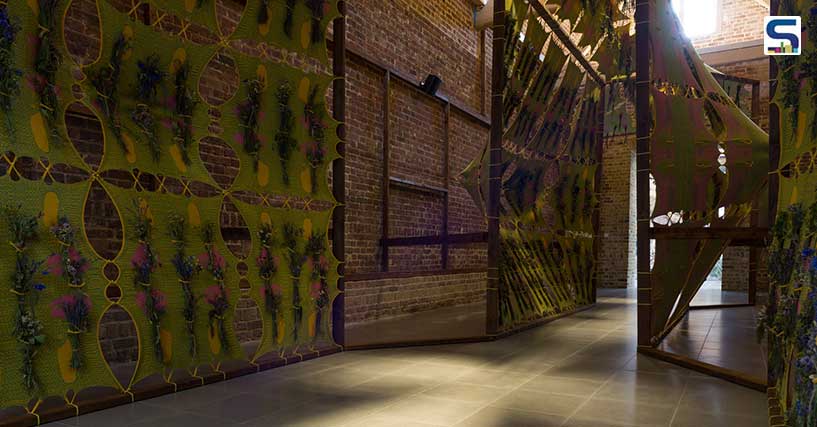 The chapel-like construction Ikum: Drying Temple is entirely made from materials recycled from Serpentine’s previous exhibition.
The chapel-like construction Ikum: Drying Temple is entirely made from materials recycled from Serpentine’s previous exhibition.
Featuring a wooden frame that has been repurposed from discarded structures that had been previously used in other Serpentine exhibitions, the installation is decorated with distinctly woven panels. Recycled cable ties hold the knitted tensiles that are made from dyed cotton fibres. They are ornamented over the wooden frame to form a structure that intends to resemble an ant. Reminding us of the healing power of plants, the multi-sensory, cocooning space is tied up in bouquets and looped into the cotton. The duo settled on particularly distinct plant cuttings by understanding their different practices which are linked to aromatherapy for mental health and womb health. It includes rosemary, lemon thyme, green sage, dyer's chamomile and two different types of lavender.
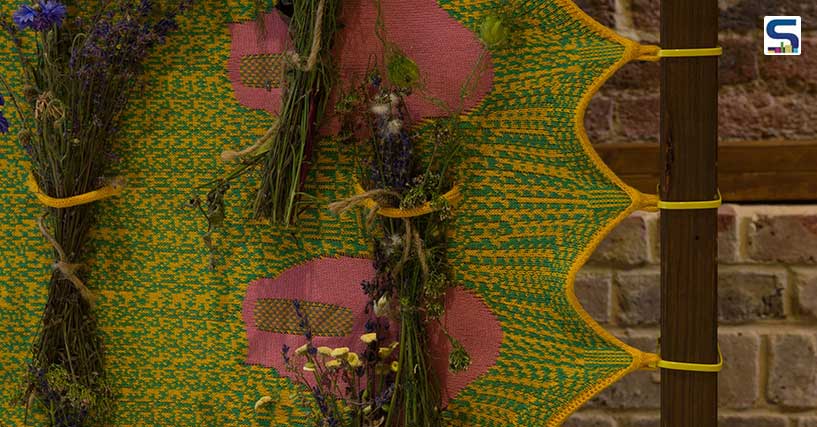 Recycled cable ties hold the knitted tensiles that are made from dyed cotton fibres.
Recycled cable ties hold the knitted tensiles that are made from dyed cotton fibres.
During the timeline of the exhibition, these woven plants will slowly lose their internal water from drying and in return release their aromatic scents for visitors. Calling Ikum a living medicinal entity in the shape of an ant, the artists aimed to highlight an ant’s role in the dispersal of seeds and general soil health. According to Agbo-Ola, the structure had been inspired by a series of his existing artworks which take cues from the symbolic textile traditions of the Yoruba and Cherokee people.
Ikum will be dismantled and further reassembled into a building in Amakaba, which is Rezaire’s centre for agroecology in French Guiana. These tensiles will be refitted with fresh plants in the Amazonian rainforest so that they can be used in various womb health practices once dried. Additionally, the plants on display at the exhibition will be gifted to visitors on its last day.
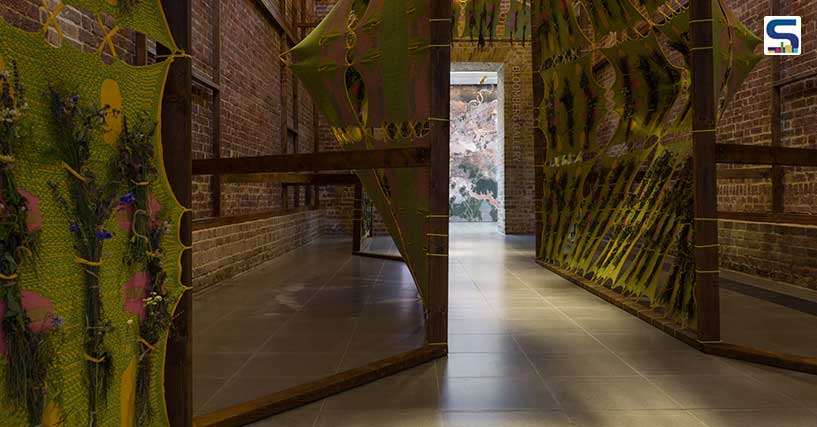 During the timeline of the exhibition, these woven plants will slowly lose their internal water from drying and in return release their aromatic scents for visitors.
During the timeline of the exhibition, these woven plants will slowly lose their internal water from drying and in return release their aromatic scents for visitors.
Image credits: Yussef Agbo-Ola, Tabita Rezaire and The Serpentine Gallery